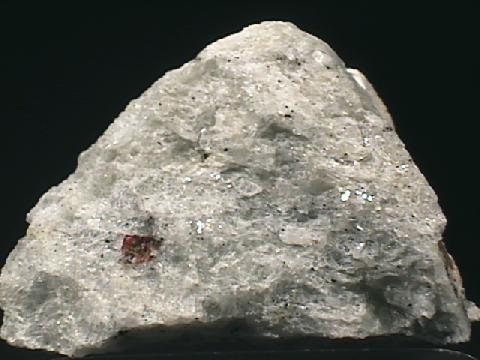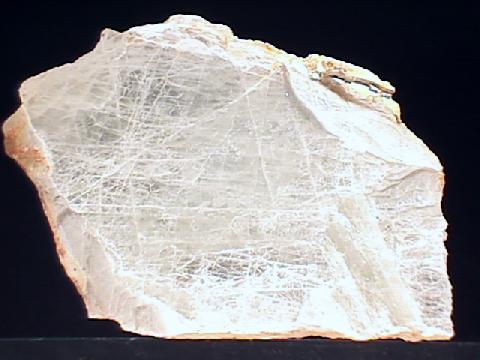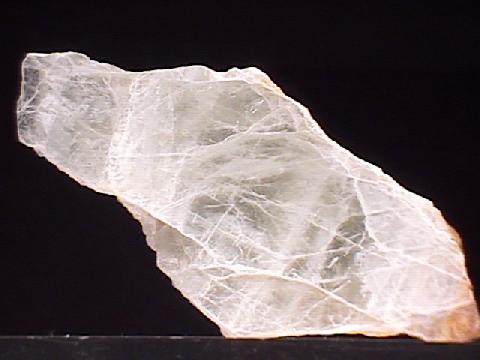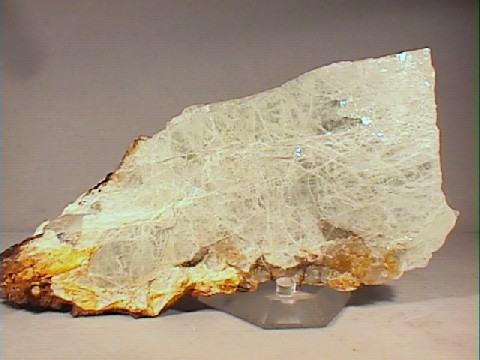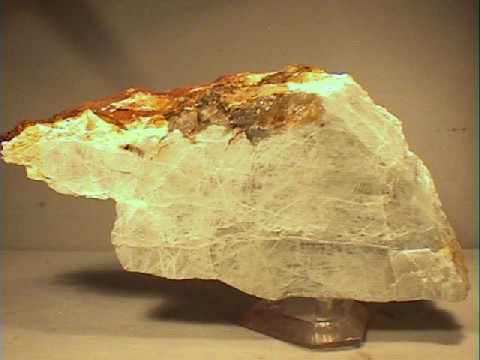 THE
MINERAL SANBORNITE
THE
MINERAL SANBORNITE
- Chemistry: BaSi2O5 , Barium Silicate.
- Class: Silicates
- Subclass: Phyllosilicates
- Uses: Only as mineral specimens.
Specimens
Sanbornite is a rare, but nicely named, phyllosilicate mineral. It is one of just a few barium minerals; other more common barium minerals being barite and witherite.
Barium tends to be a rather difficult element to place in minerals due to its large ionic size. Barium has an ionic radius of 1.34 Angstroms compared to the much more easily accommodated calcium's 0.99 Angstroms.
Barium's high density (its atomic number is 56) usually gives minerals that possess it a higher than average specific gravity. Sanbornite has a pearly luster and flashes of iridescence and can be a nice addition to someone's collection.
PHYSICAL CHARACTERISTICS:
- Color is usually a pale green, also gray, white or colorless.
- Luster is pearly to vitreous or dull.
- Transparency: Crystals are transparent to mostly translucent.
- Crystal System is orthorhombic.
- Crystal Habits include flat tabular or lamellar crystals.
- Cleavage is good in one direction.
- Fracture is uneven.
- Hardness is 5
- Specific Gravity is approximately 3.8 (above average for a non-metallic mineral)
- Streak is white.
- Other Characteristics: Displays iridescence between cleavage layers and lamellar twining is common.
- Notable Occurrences are limited to Trumball Peak, Mariposa County and Big Creek, Fresno County, California, USA.
- Best Field Indicators are crystal habit, color, cleavage, hardness and locality.

